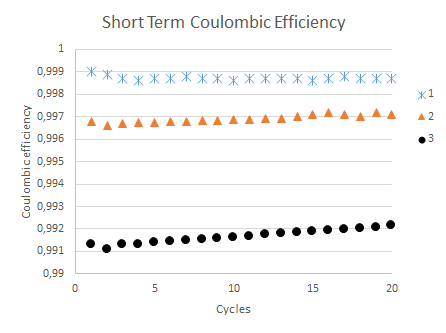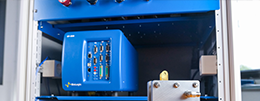Why Quality Data Matters for Smarter Battery AI
Latest updated: April 28, 2025AI (or Artificial Intelligence) is increasingly enhancing electrochemical data analysis, offering new capabilities for processing and interpreting complex datasets. However, it’s crucial to recognize that AI is only as good as the data it’s trained from. When input data contains flaws, even the most sophisticated AI models will generate misleading or meaningless results. High-quality data serves as the essential foundation for building reliable, actionable Machine Learning (ML) models that can truly advance battery technology.
Why Data Quality is Critical
Electrochemical datasets are complex and experimental data have many factors, including electrode conditions, electrolyte composition, temperature, and instrument calibration. If these variables aren’t carefully controlled and documented, AI might detect patterns that aren’t real, leading to incorrect conclusions.
To make sure AI produces meaningful results, electrochemical data should be:
- Accurate – Free from systematic errors and inconsistencies.
- Reproducible – Consistently obtained under controlled conditions.
- Comprehensive – Covering key parameters with sufficient resolution.
- Well-Annotated – Paired with metadata detailing experimental conditions, calibration data, and potential sources of error.
Garbage In, Garbage Out: The Cost of Poor Data
ML models are only as reliable as the data it’s trained on. If a dataset is full of noise, artifacts, or missing details, AI may find misleading correlations instead of uncovering true electrochemical trends.
For example:
- A model trained on uncalibrated data might mistake voltage fluctuations caused by instrument drift for a reaction mechanism.
- Background noise from an unstable power supply could be misinterpreted as a meaningful electrochemical signal.
- Temperature fluctuations, if not accounted for, might be mistaken for changes in reaction kinetics rather than simple environmental instability.
High Precision Coulometry (HPC): A Case for Better AI Analysis
One way to ensure high-quality data for predicting a battery’s lifetime is through High Precision Coulometry (HPC). This technique helps researchers estimate battery lifetime with remarkable accuracy by analyzing Coulombic Efficiency (CE). Traditional long-term cycling can take months to yield useful insights, but HPC can identify degradation patterns within weeks.


For AI to make the most of HPC data, the following factors are key:
- Current accuracy and stability – Ensuring consistent charge and discharge cycles. BioLogic’s Premium potentiostats have an accuracy down to 100 fA.
- Voltage measurement accuracy – Capturing repeatable cut-off voltage values. BioLogic’s Premium potentiostats have an accuracy down to 1 mV.
- Time base precision – Defining charge/discharge periods with high accuracy. With an acquisition time down to 1 μs, BioLogic potentiostats have one of the industries fastest time bases.
With accurate HPC measurements a battery’s long-term behavior can be predicted and ML models can extract meaningful trends rather than being misled by inconsistencies in battery behavior.
Best Practices for AI-Ready Electrochemical Data
To get the most out of AI-driven electrochemical analysis, researchers should follow these best practices:
- Standardize Experimental Protocols – Use consistent methodologies to minimize variability.
- Calibrate and Maintain Equipment – Regularly calibrate instruments to ensure reliable measurements.
- Use Sufficiently Large and Diverse Datasets – AI thrives on variability, but the dataset must represent real-world conditions.
- Document and Store Metadata – Keep detailed records of experimental conditions, including environmental factors and potential biases.
- Optimize Electrochemical Measurement Setups – Improve data quality through careful measurement techniques:
- Use a Faraday cage to shield the electrochemical cell from electromagnetic interference.
- Apply low-noise signal processing techniques like averaging and low-pass filtering.
- Ensure a high-quality reference electrode (RE) to prevent measurement inconsistencies.
- Implement 4-point connection methods to eliminate unwanted voltage drops in electrochemical setups.
- Manage ohmic drop (IR drop) to prevent distortions in AI-driven data interpretation.
Conclusion
AI has the power to revolutionize electrochemical analysis, accelerating research and enhancing predictive capabilities. But its success depends on the quality of the data we provide. By prioritizing accurate, reproducible, and well-documented datasets, researchers can ensure AI delivers real insights rather than misleading noise.
Techniques like High Precision Coulometry (HPC), combined with best practices in electrochemical measurements, create a strong foundation for AI-driven discoveries in the battery sector.
Investing in high-quality data collection isn’t just the best practice, it’s essential to unlocking AI’s full potential in electrochemical research.





